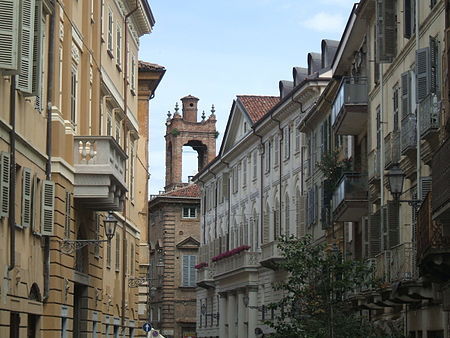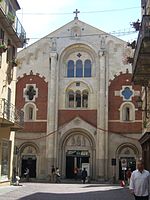Casale Monferrato

Casale Monferrato (Italian pronunciation: [kaˈzaːle moɱferˈraːto]) is a town in the Piedmont region of Italy, in the province of Alessandria. It is situated about 60 km (37 mi) east of Turin on the right bank of the Po, where the river runs at the foot of the Montferrat hills. Beyond the river lies the vast plain of the Po valley. An ancient Roman municipium, the town has been the most important trade and manufacturing centre of the area for centuries. After the fall of the Roman Empire, Casale became a free municipality and, in the 15th and early 16th centuries, served as the capital of the House of Palaiologos. Then in 1536, the town passed to the Gonzagas who fortified it with a large citadel. In the 17th century, Casale was heavily involved in the War of the Mantuan Succession and besieged by French and Spanish troops. During the wars of Italian unification the town was a defensive bulwark against the Austrian Empire. In the 1900s Casale, in the middle of the Turin-Milan-Genoa industrial triangle, developed as an important industrial centre, especially known for the production of asbestos cement. A local Eternit factory has been at the centre of a massive environmental scandal, with subsequent high-profile litigation that often made international headlines.
Excerpt from the Wikipedia article Casale Monferrato (License: CC BY-SA 3.0, Authors, Images).Casale Monferrato
Via Ascanio Sobrero,
Geographical coordinates (GPS) Address Nearby Places Show on map
Geographical coordinates (GPS)
| Latitude | Longitude |
|---|---|
| N 45.133333333333 ° | E 8.45 ° |
Address
Via Ascanio Sobrero 5
15033 , Valentino
Piedmont, Italy
Open on Google Maps








